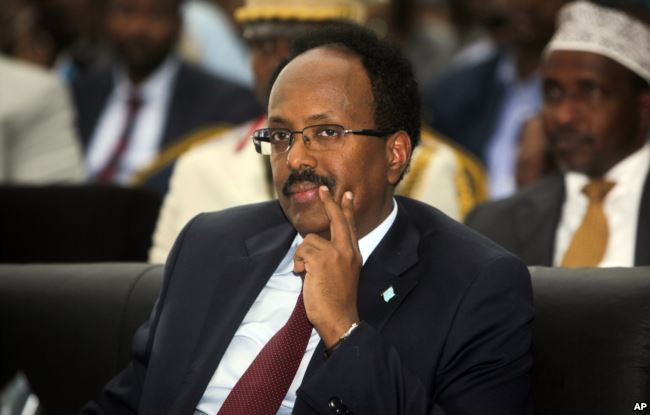No reprieve for Farmaajo as Somalia fails to exit ‘most corrupt club’

By T. Roble
Despite riding on an anti-graft platform and pledging radical surgery to rid the public sector of corruption, President Mohamed Farmaajo’s administration has not, even a dime managed to pull Somalia from the bottom list in the league of the most corrupt countries in the world.
Transparency International, for the 11th year running placed the Horn of Africa country in yet the same spot it has been- in company of South Sudan, Afghanistan and Syria.
The global anti-corruption watchdog even had a stinging criticism for those who rode into power with ‘great expectations’. “Some countries that perform poorly on the index are led by African leaders that run for office on an anti-corruption ticket, but never live up to their pledges to deliver corruption-free services to their citizens.”
FARMAAJO’S PLEDGE
Both President Farmaajo and Prime Minister Hassan Khaire made ambitious pledges to the public as they came to office last year with even the President remarking, ‘Somalia should be competing with Denmark’ in matters anti-graft. Denmark scored an impressive Corruption Perception Index of 88 to emerge the second least corrupt country in the world according to the just released report.
“Transparency International has released [in their report] that we are the most corrupted country in the world for the 10th year, and the first country in the index is Denmark, why can’t we compete with Denmark? Why are we the worst people in the world?” Farmaajo told lawmakers as he pitched for election.
“Ladies and gentlemen, if you elect me, corruption is my first target. I will fight it, I will fight it in a very brutal way. Anyone who misuses public funds, we will shame him before the people and send him to long jail term.”
PM Khaire pledged a wealth declaration exercise by all cabinet ministers adding, a wealth audit will be done when a minister exits office. None of such has happened publicly and so far six ministers have since left office.
A pledge to fast-track the passage of the anti-corruption bill to pave way for the formation of the anti-corruption authority is yet to come into fruition one year down the line.
NO EASY JOB
Transparency International notes however fighting corruption in countries undergoing conflict and lacking stable governments is no mean feat. “The lowest-scoring countries on the index are often those where there is conflict or war. Reducing corruption in these contexts is particularly challenging. The fragile nature of governments in these situations presents a real challenge to making meaningful changes.”
The report also draws co-relation between corruption and media freedom and civil society space. In countries scoring lowest in the score, TI says, repression of the civil society and killings of journalists is a common feature.
The analysis, which incorporates data from the Committee to Protect Journalists, shows that in the last six years, more than 9 out of 10 journalists were killed in countries that score 45 or less on the Corruption Perceptions Index, TI says. It called for opening up of media and civil society space as one of the measures to fight corruption.
“No activist or reporter should have to fear for their lives when speaking out against corruption,” said Patricia Moreira, managing director of Transparency International. “Given current crackdowns on both civil society and the media worldwide, we need to do more to protect those who speak up.”
The report which ranks Africa as the most corrupt bloc comes amid the African Union’s declaration of anti-corruption as its 2018 theme. The theme is ‘Winning the Fight against Corruption: A Sustainable Path to Africa’s Transformation’.
METHODOLOGY
The compilation of the report is derived from 13 data sources among them the World Bank Country Policy and Institutional Assessment 2017 and African Development Bank Country Policy and Institutional Assessment 2016. The sources of information used for the 2017 CPI are based on data published in the previous two years, TI’s methodology reads.
CPI source data captures the various aspects of corruption, based on the specific question wording used to collect the data among them bribery, diversion of public funds and prevalence of officials using public office for private gain without facing consequences. Others are ability of governments to contain corruption and enforce effective integrity mechanisms in the public sector, red tape and excessive bureaucratic burden which may increase opportunities for corruption and meritocratic versus nepotistic appointments in the civil service.
The CPI is an indicator of perceptions of public sector corruption, i.e. administrative and political corruption. It is not a verdict on the levels of corruption of entire nations or societies, or of their policies, or the activities of their private sector